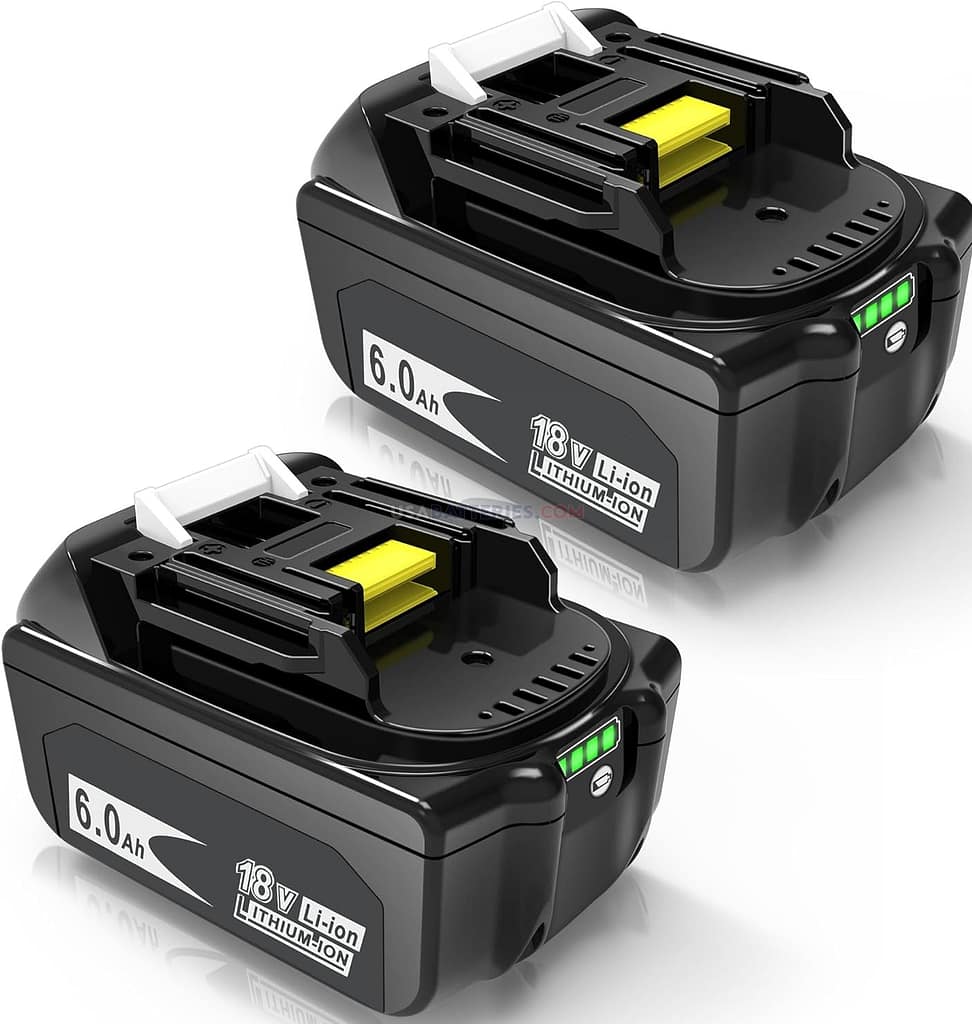Blog
Tips to Solve Frequent Problems with Makita 18V Battery

A pro on the job site or a DIYer tackling a home project? Makita power tools must be your trusted sidekick. They’re built tough and built to last. And most of all, the Makita 18V battery powers everything from drills to saws without breaking a sweat. But let’s be honest—no battery’s perfect. Even the best ones can run into issues like not charging properly, draining too fast, or overheating. Don’t panic, though! Most issues with your Makita 18V lithium battery can be averted or fixed using some simple common sense. This article guides you through common problems, gives useful solutions, and offers easy tips to extend your battery life, all based on established troubleshooting and maintenance procedures.
What’s Going Wrong with Your Makita Battery?
When your Makita 18V battery isn’t performing like it should, it’s usually one of a few common culprits. Here’s a look at the main issues and how to sort them out in a straightforward way.
My Battery Won’t Charge
Nothing is more frustrating than a battery that won’t charge. If your Makita 18V lithium battery isn’t working, start with the basics. Make sure your Makita battery charger is plugged into a working outlet and that the battery is secured properly. Sometimes, dust or dirt on the contacts can cause issues, so use a soft, dry cloth to clean the battery and charger terminals. Still having trouble? Test the charger with another battery or try using a different Makita battery charger to identify the problem. If either the charger or battery is faulty, you may need a replacement. Check if your battery is still under warranty and contact Makita’s customer support or a local service center for assistance.
The Battery Dies Too Fast
If your Makita 18V battery isn’t lasting as long as it used to, it might be getting old. Batteries lose their charge over time, especially with heavy use or if they’ve been stored or charged incorrectly. To get more life out of it, make sure you fully charge it before each use and avoid letting it drain completely. Store it in a cool, dry place; a temperature between 50°F and 77°F (10°C to 25°C) is ideal. If your battery is old or has had a lot of use, it may be time for a new one. Check if Makita’s warranty covers it for a possible replacement.
The Battery’s Getting Too Hot
If your Makita 18V lithium battery feels like it’s burning up during use or charging, stop what you’re doing and let it cool down to room temperature. Overheating can happen if you’re pushing your tools too hard for too long or using a charger that’s not meant for your battery. Always stick with a Makita battery charger designed for your specific model, like the DC18RC for 18V LXT batteries. Taking short breaks during heavy tasks can also prevent overheating. If the battery keeps getting too hot, check for damage and contact Makita for advice.
The Battery Doesn’t Fit Right
Sometimes, your Makita 18V battery might not slide into your tool or charger smoothly. First, make sure you’re using the right battery for your tool—Makita’s LXT system is picky about compatibility. If there’s dirt or debris on the contacts, clean them gently with a dry cloth. If it still won’t fit, the battery might be damaged or not the right model. Reach out to Makita’s support team to sort it out.
Could It Be a Faulty Battery?
If you’ve tried everything and your Makita 18V battery still won’t work, it might be a dud. Look for signs of physical damage, like cracks or leaks, or if it just refuses to power your tool. In this case, get in touch with Makita’s customer support or visit an authorized service center. If the battery’s under warranty, you might be able to get a replacement.
Easy Ways to Keep Your Battery in Top Shape
The best way to avoid battery headaches is to take good care of your Makita 18V lithium battery from the start. Here are some down-to-earth tips to help it last longer.
Stick with the Right Charger
Always use a Makita battery charger that’s made for your battery model. For example, chargers like the DC18RC are built to work perfectly with Makita’s 18V LXT batteries. Using the wrong charger can mess up your battery or cause it to charge poorly. Check your charger’s manual to make sure it matches your battery’s voltage and amp-hour rating.
Charge It the Smart Way
Charging your Makita 18V battery the right way can make a big difference. Don’t charge it in super hot or cold spots—aim for a comfy 50°F to 77°F (10°C to 25°C). Charge it fully before use, but avoid leaving it plugged in indefinitely, as this can cause wear over time. If the battery’s warm from heavy use, let it cool off before charging to keep it happy.
Store It Properly
When you’re not using your Makita 18V lithium battery, keep it in a cool, dry place away from sunlight or dampness. A partial charge of about 40–50% is best if you’re storing it for a while, as it keeps the battery’s chemistry balanced. Avoid leaving it completely drained, as that can hurt its ability to hold a charge. Pop it in a protective case or its original box to keep dust and dings at bay.
Handle It with Care
Be kind to your vacuum battery. Don’t drop it, get it wet, or push it too hard without giving it a break. Try not to let it drain down—recharge it before it hits zero to keep it in good shape.
Keep Things Clean
Dust or dirt on the battery contacts can cause charging or fitting problems. Regularly wipe the terminals on your Makita 18V battery and charger with a soft, dry cloth. Be gentle and avoid using water or harsh cleaners to prevent damage.
Try a Quick Reset
If your battery’s acting up, a simple reset might do the trick. Take the battery out of the tool, wait about 30 seconds to a minute, then pop it back in firmly. This can clear up minor glitches in the battery’s circuitry. After resetting, charge it fully and give it a test. If it’s still not working, reach out to Makita for help.
Why You Should Your Battery Matters
Looking after your Makita 18V lithium battery isn’t just about dodging problems—it’s about getting the most bang for your buck. Makita’s LXT system lets you use one battery across tons of tools, like drills, saws, and sanders, which is super handy for woodworking, construction, or home projects. By keeping your battery in good condition, you’ll save cash on replacements, cut down on downtime, and keep your tools running smoothly. Plus, these batteries are eco-friendly with zero emissions, so good care helps you work greener, too.
When to Call in the Pros
If you’ve tried these tips and your Makita battery is still giving you grief, it’s time to get some expert help. Contact Makita’s customer support or head to an authorized service center. They can check for deeper issues, like a busted protection circuit or internal damage, and guide you on repairs or replacements. Don’t forget to check your battery’s warranty status—Makita’s got your back with coverage for defective products.
Keep Your Makita Batteries Running Strong
Your Makita 18V battery is the backbone of your power tools, and with a bit of care, it’ll keep your projects humming along for years. From using the right Makita battery charger to storing and handling your battery properly, these tips can help you steer clear of common issues and make your battery last. For top-notch Makita batteries, chargers, and tools, swing by USA Batteries’ wide selection of professional-grade gear. Got questions or need help picking the right battery? Give us a call now at 719-205-4861 or send us an email at sales@usabatteries.com
Makita 18V Battery Technical Overview
| Feature | Details |
| Battery Type | Lithium-Ion, LXT series |
| Models & Capacity | – BL1830B: 3.0Ah, ~30-min charge- BL1840B: 4.0Ah, ~40-min charge- BL1850B: 5.0Ah, ~45-min charge- BL1860B: 6.0Ah, ~55-min charge |
| Nominal Voltage | 18V (3.6V per cell, 5 cells in series) |
| Cell Types | High-quality cells (e.g., Samsung 30T, Murata US18650VTC6) |
| Protection System | STAR Protection Computer Controls with CPU and memory chip to prevent over-discharging, overloading, and overheating |
| Charge Indicators | Built-in LED indicators for charge level monitoring |
| Compatibility | – Compatible with 350+ LXT tools with Star Symbol or yellow connector plate- BL1840B and higher backwards compatible with older Star/yellow connector tools- Older 3.0Ah batteries may not fit newer high-capacity tools |
| Chargers | DC18RC, DC18RD (optimized for LXT batteries) |
| Operating Conditions | – Temperature range: -4°F to 122°F (-20°C to 50°C)- Resists self-discharge during storage |
| Lifespan | 300–500 charge cycles with proper care |
| Note | Always verify tool compatibility to prevent damage |










